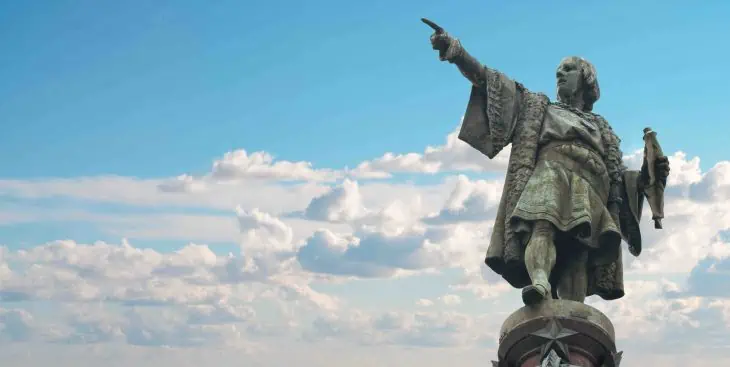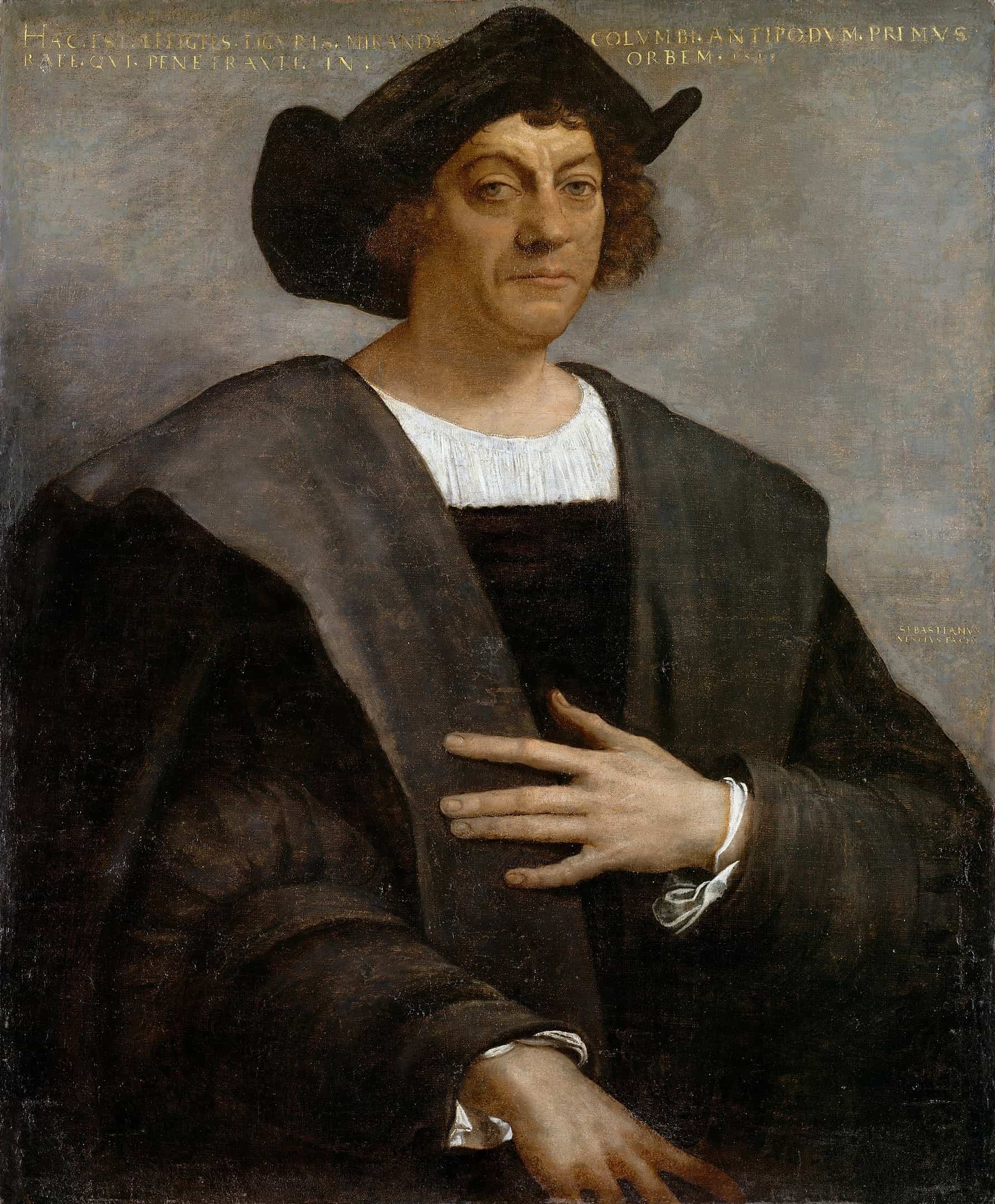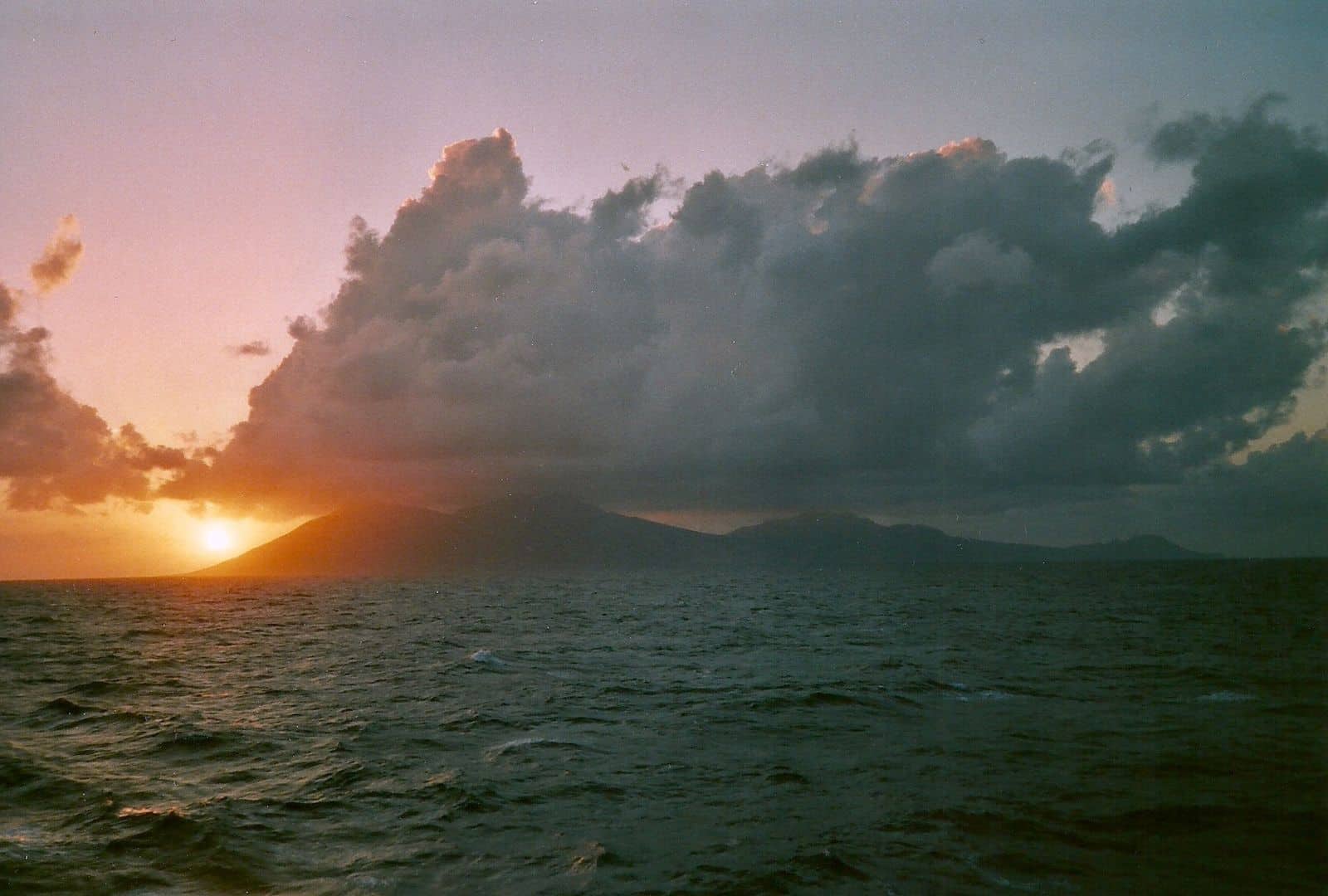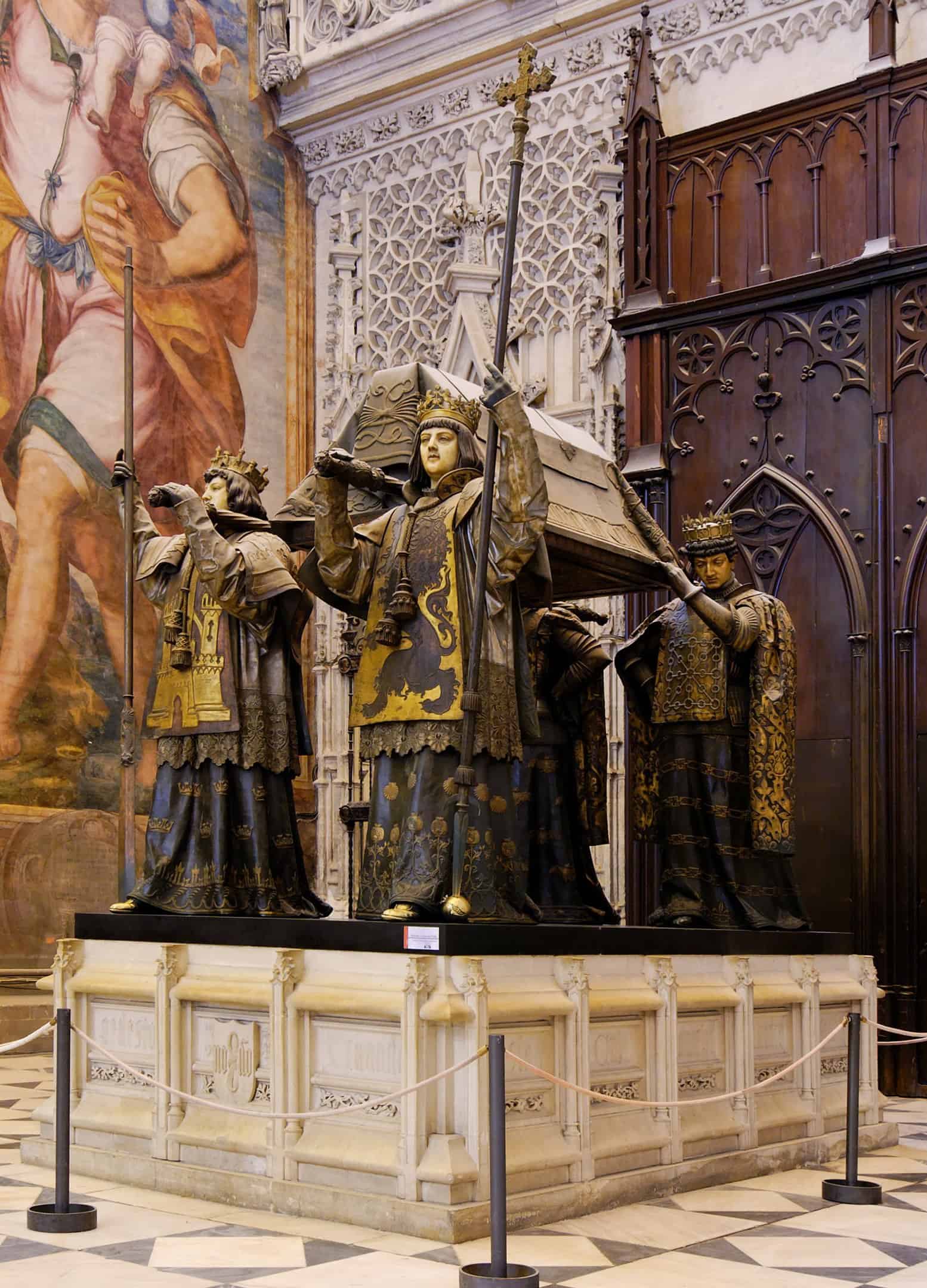
Christopher Columbus earned his place in history when he discovered the Americas. But the legacy he left behind for the world isn’t as glamorous as it seems.
How so? Like many European explorers, Christopher Columbus interacted with indigenous people in the middle of his trips. There are stories of Columbus and his men perpetrating the most heinous crimes against indigenous women, men, and children. The Columbus’ diaries also keep records of these acts!
The Arawak people, who lived on the island that is now Haiti and the Dominican Republic, encountered Columbus and his crew. Columbus captured them and forced them to mine for gold in large numbers. If the Arawak did not produce a certain amount of gold in a certain amount of time, they experienced violent punishments. The Arawaks fought back, but they were unable to avoid the onslaught of brutality. There were roughly 250,000 natives on the island when Columbus arrived in 1492.
We won’t be surprised if these creepy Christopher Columbus facts change how you saw him. Many experts, however, believe his discovery of the “New World” changed the course of history.
Columbus led four expeditions to the “New World,” visiting the Caribbean Islands, the Gulf of Mexico, and the mainlands of South and Central America. He had discovered the “New World” for Europe, whose riches would help Spain become the world’s richest and most influential nation over the next century.
Still, should Columbus still be called a hero? Are his achievements enough to outshine his mistakes? Or was he purely a villain who ravaged lands and killed thousands? To help you get answers, check out our 40 Christopher Columbus facts below.
- Christopher Columbus made a total of four expeditions across the Atlantic Ocean.
- He was the first explorer to establish a European presence in the New World.
- In addition to his native Italian, Columbus also knew Latin, Portuguese, and Spanish.
- Columbus never wrote anything in his native Italian.
- He also self-educated himself in astronomy, geography, and history.
- Christopher Columbus originally came from Genoa in Italy. Experts say he was born between August 25 and 31, 1451.
- Columbus first sailed the seas at the age of 10.
- Columbus later relocated to Portugal in 1477.
- Throughout the 1480s, Columbus sailed the trade routes along the African coast.
- He eventually relocated to Spain towards the end of the decade.
- Columbus made his first voyage to the Americas in 1492. He discovered Cuba and Hispaniola in that year.
- Spanish royalty had Columbus arrested in 1500 for abusing his authority as governor.
- King Ferdinand II of Spain released Columbus and restored his properties, but not his position as governor
- Columbus later sued the Spanish Crown for failing to give his share of the profits from the colonies in America.
- His descendants continued the lawsuits until the 18th century.
- The modern country of Columbia takes its name from Christopher Columbus.
- United States’ District of Columbia also takes its name from Columbus.
- North America’s Columbia River’s name was also hailed from Columbus.
- In his native Italian at the time, Columbus is known by the name, Cristoffa Corombo.
- Columbus started the trend of calling indigenous American people, Indians.
Columbus had a complicated family life.
He first married Filipa Moniz Perestrelo in 1479, the daughter of a Portuguese nobleman, Bartolomeu Perestrello. They had a son, Diego Columbus, in 1480, during one of Columbus’ trading expeditions along the African coast.
A year later, in 1485, he and his son moved to Spain, where he found a mistress, Beatriz Enriquez de Arana. They also had a son, Fernando Columbus, who Christopher Columbus recognized as legitimate, despite not having married the boy’s mother.

Europe had an economic reason to find an all-sea route to Asia.
During the reign of the Mongol Empire, European merchants could freely travel along the Silk Road across the Middle East to India and China. There they could buy and trade for luxuries in demand in Europe, such as silk and various spices.
However, the Fall of the Mongol Empire and the Ottoman Turks’ conquest of the Eastern Roman Empire changed things. Europeans and merchants found themselves barred from traveling through the Middle East to reach India and China. While they could still buy silk and spices through Muslim merchants, the prices became higher. This led to increased demand in Europe for those luxuries, while also leading to the need of finding a way to Asia around the Muslim-controlled Middle East.
Columbus tried to gain support for his expedition from several monarchs.
He first made the proposal to King John II of Portugal in 1484, who rejected it from what seemed like Columbus underestimating the distance between Europe and Asia. Columbus then tried to get support from the Italian merchant republics of Genoa and Venice, only to find himself rejected for the same reason.
He then went to King Ferdinand and Queen Isabella of Spain, who thought his proposal too impractical. That said, they recognized the potential, and they granted him an annual allowance and ordered that Spanish towns and cities provide Columbus lodgings at no cost. They did so to keep Columbus’ goodwill just in case they needed his future services. Columbus returned to King John II in 1488, only for Bartolomeu Diaz to outshine him by going around South Africa’s Cape of Good Hope.
The Spanish Crown eventually made an agreement with Columbus.
Columbus found himself summoned to join the royals at their camp while they conquered Granada from 1491 to 1492. Afterward, they began a new series of discussions, with the Spanish Crown agreeing to sponsor Columbus’ expedition.
At the time, the Portuguese monopolized the shipping lanes from Europe to Asia and around Africa. The Spanish Crown hoped that Columbus could break that monopoly by finding a direct route to Asia across the Atlantic Ocean.
In return, the Spanish Crown agreed to grant Columbus the rank of admiral if he succeeded. He would also enjoy the positions of viceroy and governor of any new lands he discovered, and 10% of all profits.
Columbus reached the Americas in October 1492.
It was October 11 when Columbus reached the Americas, but the specific site remains a mystery up to this day. Columbus’ records say that the natives called the island they first arrived at Guanahani, which Columbus renamed San Salvador. Scholars traditionally identified it as Watling’s Island in the Bahamas, but over the 20th century, disputes have arisen whether Watling’s Island really was Guanahani. Despite the disputes, however, Watling’s Island officially renamed itself as San Salvador Island in 1925.
Columbus named many of the Lesser Antilles during his second expedition.

These include Montserrat Island, which he named after Mount Montserrat in Catalonia, Spain. He also named Antigua Island after a church of the same name in Seville, Spain. Same with Nevis Island, from the Spanish Nuestra Señora de las Nieves. The name came from Our Lady of the Snows, as saw the clouds around Nevis Peak made it look covered with snow. He also named Saba Island after the Bible’s Queen of Sheba, and Saint Martin Island from the saint of the same name. Columbus also discovered and named the Virgin Islands during this expedition.
He also fought the first battle between the Europeans and Americans in 1493.
Well, the first battle since the Vikings explored North America in the 10th and 11th centuries. It took place on November 11, at Saint Croix Island, where Columbus’ men pursued a canoe belonging to the Island Caribs. The Caribs are an indigenous people of the Lesser Antilles in the Caribbean.
One Spaniard died in the battle, while all the Island Caribs eventually all died or became prisoners. One of Columbus’ men, Michele da Cuneo, recorded that Columbus allowed his men to enslave women in the island.
Columbus’ reign as governor proved harsh and brutal.
Here’s another disturbing example of Christopher Columbus Facts. For one thing, he enslaved the natives, forcing them to mine for gold even though no Caribbean island had gold deposits of any kind. He also shipped other natives to Europe, again as slaves, with as many as 40% dying along the way.
Slave miners who failed to meet their quota found themselves punished with a hand getting chopped off. This led to mass suicides among the natives, who poisoned themselves in despair after seeing no other way out of the miserable conditions they found themselves in.
When the natives finally revolted, Columbus responded harshly, hanging or burning any native that didn’t die in battle. Those that didn’t get killed instead found themselves shipped to Europe to become slaves.
Spanish colonists in America even turned against Columbus.
He treated them harshly, with even minor crimes like theft getting punished by execution. Columbus also refused to tolerate personal attacks, with one woman who spoke of his common birth forcing to parade naked as punishment.
She later also had her tongue cut out, which Columbus considered a just punishment for staining his family’s honor. This along with his mismanagement of the colonies led to the Spanish Crown stripping him of rank and status in 1500. He then found himself shipped back to Europe in chains as a prisoner charged with incompetence and even tyranny.
Columbus lived in denial of his discovery of a new continent until his death.
Instead, he constantly insisted that the islands he found lay only a short distance away from Asia. He even once described Cuba to Pope Alexander VI as the east coast of Asia, despite all evidence otherwise.
The cause of Columbus’ death remains a matter of debate to this day.
According to records, Columbus suffered from periodic attacks of gout. The first attack in fact took place at sea, during his first expedition to the Americas, while on the way back to Europe.
The attacks increased in frequency and severity over the years, eventually leading to his death. Other records also testify that Columbus suffered severely from the flu, as well as bleeding from the eyes, and even temporary blindness. This has led modern scholars to consider the possibility that Columbus didn’t actually suffer from gout.
Instead, they think he suffered from reactive arthritis, resulting from intestinal bacterial infections caused by food poisoning from bad food during his expeditions.
His final resting place also remains a mystery to this day.

Columbus’ traditional resting place lies in the Cathedral of Seville in Spain. Scholars had DNA samples taken from his remains in 2003 and tested against those of brother and son. The only thing they could prove was that the body in the Seville Cathedral shared the same mother as Columbus’ brother.
While most scholars accept it as proof that Columbus truly rests in the Cathedral of Seville, others remain skeptical. In particular, they point out how Columbus’ supposed bones do not match his historical physique at the time of his death.
Columbus Day celebrates Columbus’ legacy in the Americas.
Spain also celebrates it on October 12, as do most countries in the Americas. In the USA, however, it’s always on the second Monday of October, while Canada doesn’t celebrate Columbus Day at all.
Columbus wasn’t actually the first European to discover the Americas.
That honor goes to Leif Erikson, a Norse explorer from Iceland, who arrived in North America around 1000 AD. He and his fellow Norsemen even founded a small colony of their own, which they called Vinland. Modern archaeologists continue to look for the colony, with a ruined Norse settlement in Newfoundland, Canada, as the prime site.
Columbus never believed the Flat Earth theory.
The idea that Columbus doubted the Flat Earth theory comes from an 1828 biography, which claimed that Columbus found it difficult to find support because the Catholic Church also believed in the Flat Earth theory.
This, in turn, goes back to 17th Century Protestant propaganda against the Catholic Church. In reality, the Catholic Church actually preserved the theoretical knowledge going back to ancient times when Greek mathematicians used geometry to prove and calculate the Earth’s roundness.
That said, Columbus’ own grasp of geography had its fair share of fantasy. For one thing, on noticing how the North Star’s position wasn’t actually fixed, he came to the conclusion that the Earth actually had a pear-like shape. Columbus even believed towards the end of his life that South America was actually the legendary Earthly Paradise.
He did have strange Biblical beliefs, however.
He frequently quoted the Bible and various prophecies in his records, but this isn’t especially unusual for people of his time. The strangeness comes from Columbus’ own sense of destiny. In particular, he saw himself on a divine mission to find wealth in the Americas. That wealth would then allow Christendom to launch new crusades in the Middle East. First, they would retake Jerusalem, and then rebuild the Temple of Solomon.
Criticism of Columbus’ legacy has steadily grown over the centuries.
Even in his day and age, his peers criticized him, with even the Spanish Crown seeing him as especially cruel. Even after they restored his properties, they refused to reappoint Columbus as governor and denied him his 10% of profits.
Many Spanish colonists also accused him of scamming them to move the Americas. The criticism became especially pronounced in the 20th Century, with Columbus seen as the one who started the genocide of Native Americans. This had led some states in the USA to abandon Columbus Day, as do some other countries like Peru and Argentina.
Millions died thanks to Columbus’ arrival in the Americas.

Up to 90% of the native population in the Caribbean died within a century after Columbus’ arrival. Scholars note that while slavery and plain cruelty killed plenty of natives, the biggest killer of them all proved the diseases Columbus and the Europeans brought with them.
Smallpox, in particular, proved especially deadly. It had a fatality rate of 80% thanks to none of the natives having even the smallest amount of resistance to the disease.
Defenders of Columbus’ legacy accuse his critics of perpetuating the Black Legend.
The Black Legend involves Protestant persecution and even demonization of Catholics in general, and of Spaniards in particular.
This has led to responses against Columbus’ legacy becoming moderated. For example, in America, many states have rebranded Columbus Day as Italian-American Day, celebrating the Italian-American community’s contributions to America.
No actual reproduction of Columbus’ appearance existed in his lifetime.
Even the most commonly used appearance of Columbus, a portrait by Sebastiano del Piombo, made in 1519, doesn’t accurately depict the explorer. In fact, most reproductions of Columbus’ appearance do not match with the historical written records of his appearance.
He was described as a very tall man with sunburn skin, blue or brown eyes, and reddish-blonde hair. They also described him as having a freckled face, with high cheekbones and a curving nose.
Was this page helpful?
Our commitment to delivering trustworthy and engaging content is at the heart of what we do. Each fact on our site is contributed by real users like you, bringing a wealth of diverse insights and information. To ensure the highest standards of accuracy and reliability, our dedicated editors meticulously review each submission. This process guarantees that the facts we share are not only fascinating but also credible. Trust in our commitment to quality and authenticity as you explore and learn with us.
